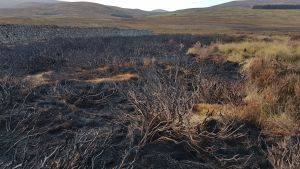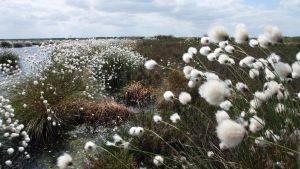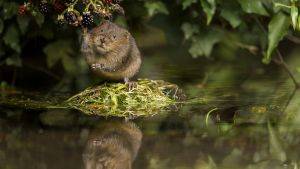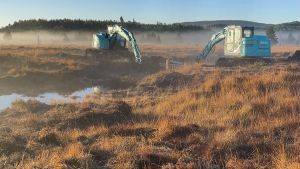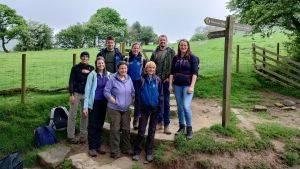Conservation work now underway as part of MoorLIFE 2020
After months of preparations and surveying, the first work that will help protect and transform moorlands across the South Pennines and the Peak District National Park is underway.
Work has started on the Derwent and Howden moors, as part of the €16 million five-year MoorLIFE 2020 project, which will complement existing projects spearheaded by the Moors for the Future Partnership.
Over the next four years the project will work to protect the integrity of 95 sq km of active blanket bog through re-vegetating bare peat, improving hydrology and diversifying existing vegetation.
These conservation works will be backed by extensive scientific monitoring to evaluate the success of various methods developed and trialled, and be supported by innovative community engagement to highlight why healthy moorlands are important.
Diarmuid Crehan, MoorLIFE 2020 Project Manager said: “The sheer scale of this project has meant that it is important that in-depth preparatory work has been carried out first and we are delighted that work on the ground is underway.
“Over the life of the project we will be re-vegetating almost 50 hectares of bare peat, blocking 85 km of erosion gullies as well as conducting a fantastic amount of research and monitoring to measure the impact it has.”
In this first phase of work, erosion gullies on Howden and Derwent Moors will be blocked to raise the water table and rewet the moors. The dams are flown onto site and will be installed by hand by the National Trust’s Peak District Estate Team who is delivering this part of the project.
 Jon Stewart, General Manager for the National Trust in the Peak District said “Being a partner in MoorLIFE2020 will enable the Trust to continue its extensive moorland restoration work as part of our High Peak Moors Vision. This restoration work has huge public benefits. We are raring to go and make a real positive difference for these well-loved and very special moorlands”.
Jon Stewart, General Manager for the National Trust in the Peak District said “Being a partner in MoorLIFE2020 will enable the Trust to continue its extensive moorland restoration work as part of our High Peak Moors Vision. This restoration work has huge public benefits. We are raring to go and make a real positive difference for these well-loved and very special moorlands”.
The work is needed as the blanket bogs of the South Pennine Moors Special Area of Conservation (SAC) are at significant risk, with large areas devastated by 150 years of atmospheric pollution and wildfires.
MoorLIFE 2020 is funded by a grant of €12 million from the EU’s LIFE fund, as well as significant contributions from three major utility companies, Severn Trent Water, United Utilities and Yorkshire Water.

